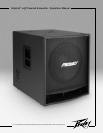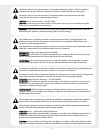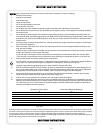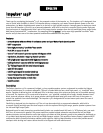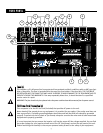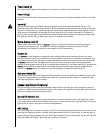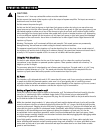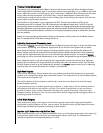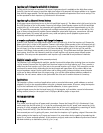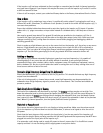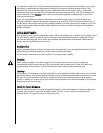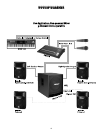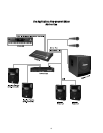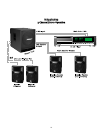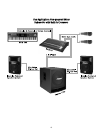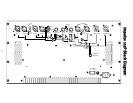
8
VVoolluummee CCoonnttrrooll AAddjjuussttmmeenntt
The Impulse 115P is equipped with a Master System Level volume control (6). When the Master System
Level is adjusted fully clockwise‚ gain is at maximum and the input sensitivity is 0.375 VRMS for full-rated
output. When this control is set half way up‚ gain is unity and 1.5 VRMS will drive the system to full power
output. When driving the Impulse 115P from a mixer‚ it may be advantageous to reduce the input
sensitivity by turning the volume control to the half-way point. At this setting‚ the Impulse 115P will more
closely match a typical power amp input.
The amplifiers in the Impulse 115P are equipped with DDT. This unit also includes an LED (11) that
illuminates when DDT is activated. This LED is located next to the Master System level. The DDT circuit will
automatically reduce the channel gain to a level just slightly into clipping, guarding the speakers against the
damaging high power continuous square waves that may be produced. Situations that may activate the DDT
circuit include uncontrolled feedback, oscillations, or an improper equipment setting or malfunction upstream
from the amplifier.
Always turn on any peripheral units before turning on the Impulse 115P. Also‚ make sure the Master System
level is completely down (CCW) before turning the unit on.
AAddjjuussttiinngg tthhee kkoossmmooss
™™
PPrroocceessssiinngg LLeevveell
The amount of
kkoossmmooss
processing is controlled by the Master System level knob. In order to achieve more
sub-harmonic processing‚ turn the Master System level (6) up and the Level/Quake knob (7a) down.
When using the Impulse 115P with a passive‚ full-range speaker system‚ the relationship between the
Master System level and the Quake/Sub level will determine the balance between the overall subwoofer
output and the high frequencies that sent to the Left and Right speaker outputs. The amount of
kkoossmmooss
processing can not be controlled independently. It can‚ however‚ be bypassed using the Bypass switch (7c).
When using the Impulse 115P with a powered‚ full-range speaker system from the line level‚ high-pass
outputs (8)‚ the powered‚ full-range speakers will usually have their own volume control. This will allow
the high frequency level to be set independently. However‚ the
kkoossmmooss
Xpanse control (7b) for adjusting
stereo spread‚ can only be adjusted at the Impulse 115P subwoofer.
HHiigghh--PPaassss OOuuttppuuttss
These are low impedance‚ filtered outputs that are provided to send the high frequencies to a powered
speaker or to a conventional power amp and speaker system. The output level is set by the Master System
level control on the Impulse 115P.
The nominal polarity of these outputs is positive (pin 2) and can be run directly into most full-range‚
powered speaker systems.
If you experience hum or related ground loop problems‚ it might help to lift the shield ground on
the balanced XLR cable at the Impulse 115P end. This can be accomplished via the convenient
ground lift switch (10b) located underneath the High-pass output jack group. Check any input
changes carefully. Always turn the volume control down before plugging and unplugging cables or
switching ground lift switches.
LLeefftt && RRiigghhtt OOuuttppuuttss
These outputs will supply a full-range‚ 8 ohm minimum speaker system with a high-passed amplifier
signal when using the Impulse 115P as a 3-piece system. The Xpanse control (7b) will expand the stereo
sound stage and add high frequency processing to these outputs.
IImmppuullssee 111155PP:: SSuubbwwooooffeerr oonnllyy ((AAdddd--oonn UUssee))
When using the Impulse 115P as a powered subwoofer only‚ run a full-range stereo signal to the inputs (5)
or plug a mono signal into the Left input (5a) and engage the Mono switch (5d). The subwoofer will
reproduce frequencies from approximately 45 Hz–120 Hz.



